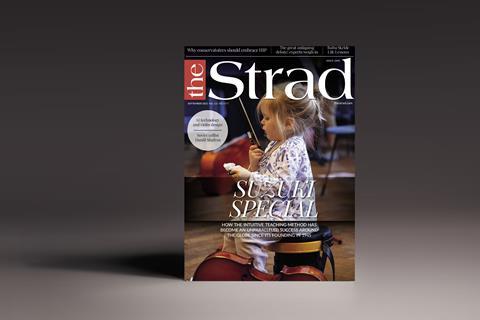The Strad’s editor Charlotte Smith introduces the September 2021 issue

Since Japanese violinist and pedagogue Shinichi Suzuki first launched his revolutionary string method in 1945, it has enjoyed unparalleled popularity around the globe. Not without its controversies – accused by some of producing robotic, massed performances and neglecting fundamental skills such as sightreading – it is generally now accepted as a legitimate and successful teaching system, more the victim of misapprehension than any real deficiencies in its philosophy. What has never been in doubt is the love of music making at the heart of Suzuki, its inclusion of parents and family in the learning process, and the core egalitarian belief that every child is capable of being talented.
On page 28 Samara Ginsberg speaks to current teachers and former pupils about the impact and growth of the method since the turn of the millennium, while on page 37, pedagogue Helen Brunner describes her personal experiences of studying with Suzuki, and reveals the master’s approach to tone production, with reference to his exercises and diagrams. Plus, this month’s Technique article on page 102 features teaching tips from Naperville Suzuki School instructor Edward Kreitman, who addresses common misunderstandings of primary Suzuki techniques and materials.
Elsewhere in this education-themed issue, Royal Conservatoire of The Hague professor Walter Reiter argues on page 40 that historically informed performance – beyond the works of Bach – should no longer be regarded as a specialist area of musical study; rather it provides an essential foundation to mastering all styles and genres. Naomi Yandell’s Opinion piece on page 26, meanwhile, makes the case for incorporating humour into instrumental lessons as a way of diffusing tension and encouraging relaxed and enjoyable playing. Finally, learning is also at the heart of Sebastian Gonzalez’s article on violin making and artificial intelligence (page 58). Here he demonstrates how the technology could help to predict an instrument’s tone quality before even the first piece of wood has been cut.
Charlotte Smith editor
Email me at thestrad@thestrad.com or tweet @TheStradMag










































No comments yet